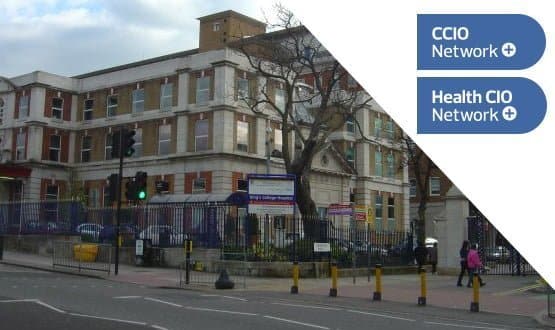Fit for a Princess
- 6 May 2015

King's College Hospital NHS Foundation Trust is one of just a handful of trusts at the top of Digital Health Intelligence’s Clinical Digital Maturity Index. But it has taken time for the trust to reach this level of digital maturity.
The south London trust’s early, step-by-step approach to implementing an electronic patient record began back in 1999; a year after the government’s ‘Information for Health’ strategy proposed a six-level ‘ladder’ to EPR for trusts to implement locally.
The strategy’s lack of success at a national level led to another failure in the form of the National Programme for IT, which was set up when it became clear that I4H’s targets would be missed, and which aimed to deliver single systems to entire health economies.
As the local service providers struggled with the programme, King's College Hospital ploughed on, implementing the iPM patient administration system developed by iSoft (now CSC).
The hospital’s in-house IT team went on to configure this PAS as the foundation for a full EPR, based on the iCM clinicals suite. And, more recently, it has gone on to incorporate newer technologies, such as apps.
Just last week, it announced that it was working with a company called Medopad to pilot an oncology app that works with the Apple Watch.
Take a struggling hospital…
It’s not all been plain sailing, however, as director of ICT Colin Sweeney and chief clinical information officer Jack Barker explained at a recent CCIO Leaders Network / Health CIO Network best practice event at the King's College Hospital’s campus in Denmark Hill.
The most pressing, current concern is integration with the Princess Royal University Hospital, which King's took over at the end of 2013. This followed the dissolution of South London Healthcare NHS Trust due to persistent financial problems.
“We face a crisis point at the moment,” said the trust’s executive medical director, Michael Marrinan. “The trust has expanded and the difficulty is expanding into this seamless connection between different hospitals and different trusts.”
In IT terms, Princess Royal had been prepared to take the national programme solution, Cerner Millennium, as part of a programme to deploy this at all the sites covered by South London Healthcare.
Another of South London Healthcare’s old hospitals, Queen Elizabeth Hospital, is pushing ahead with Millennium, as part of a move to integrate with the nearby Lewisham Healthcare NHS Trust. But King’s needs to implement its EPR at its new site.
Sort out the infrastructure…
Over the past year, the focus has been on implementing the infrastructure to support a functioning EPR, including joining up networks and putting a wireless network in place.
This allowed the trust to implement its iPM PAS at Princess Royal in November last year, paving the way for a wider EPR deployment.
Sweeney, who has been with King’s College Hospital since 1997, spoke of the importance of having the right infrastructure to get clinicians on board with further IT developments.
“There are a lot of IT elements we need to sort out first. We know it’s important to have this culture of getting clinical engagement, but it doesn’t work in less you have infrastructure in place. You need networks, you need to look at HR and finance systems – all those sorts of things.
“If the system keeps on failing – if the wireless network doesn’t work – then your electronic prescribing isn’t going to work and so on.”
Address the IT…
Yet the roll-out of software to support efficient, effective working cannot be long delayed. The urgency of the situation was stressed by Barker.
“Just after we put the PAS in, notes availability at clinics was at 50%,” he said. “So for half the people turning up in clinics – their notes weren’t there.”
This kind of failure underlies persistent workflow issues at the hospital. “They couldn’t get operations done, they had to cancel operations because they didn’t have beds, they couldn’t get patients out of the emergency department,” Barker said.
And, inevitably, it has impacted on the trust’s financial situation and ability to hit key targets. Since the addition of Princes Royal, King's has become one of the worst performing trusts in London, hitting the four hour A&E waiting time target for an average of around 65% of patients.
King’s is now perceived as being close to crisis. Barker said the CQC and Monitor were “all over us” while consultancy firms PWC and McKinsey have both been in to Princes Royal.
“It’s only by working as an IT person that I’ve become aware we are not supporting flow as an issue as much as we could be,” Barker said. “We’ve been very good at supporting clinicians, but we haven’t really dealt with site teams and infection control teams and managed beds and things like that.”
Barker said it had a been a struggle to get financial backing for IT developments, but the estimated £250,000 cost of implementing an EPR at Princess Royal by the end of 2015 was a “snip” for the benefits it would bring.
“We’ve just got to do it,” he said. “Our strategy is to get it in as fast as possible. We’ve bodged and actually done quite well for bringing stuff together from their existing systems; but we need to take that next step.”
More haste, less speed
Unfortunately, the NHS acute sector is facing a financial crisis. Marrinan was frank in his admission that King’s is “struggling” – it is among the 80% of acute trusts in the red and contributing to a deficit that NHS Providers has estimated could reach £2.5 billion by the end of the current financial year.
King’s has not built a full EPR for King’s College Hospital through one, single, huge investment. Instead, it’s IT team has worked “steadily, quietly, incrementally”, as Marrinan put it, “building with the little they could carve out from the financial department every year.”
The same approach has been applied at Princess Royal to date; but it may no longer be enough. At the same time, there are urgent matters to address when it comes to the future of IT at King's College Hospital itself.
“The challenges for the future are productivity, visibility and cost,” said Marrinan. “And at King’s, because we were early adopters, our EPR system needs major improvement. We have tinkered and built and built – but now it needs a change.”
The suggestion that the trust’s EPR, still based on a 16-year-old PAS, needs an overhaul was also made by Sweeney. “Our aim is to roll out what we’ve got at Princess Royal but it is an old creaking system and we need to look at what we’re going to do in the future.”





